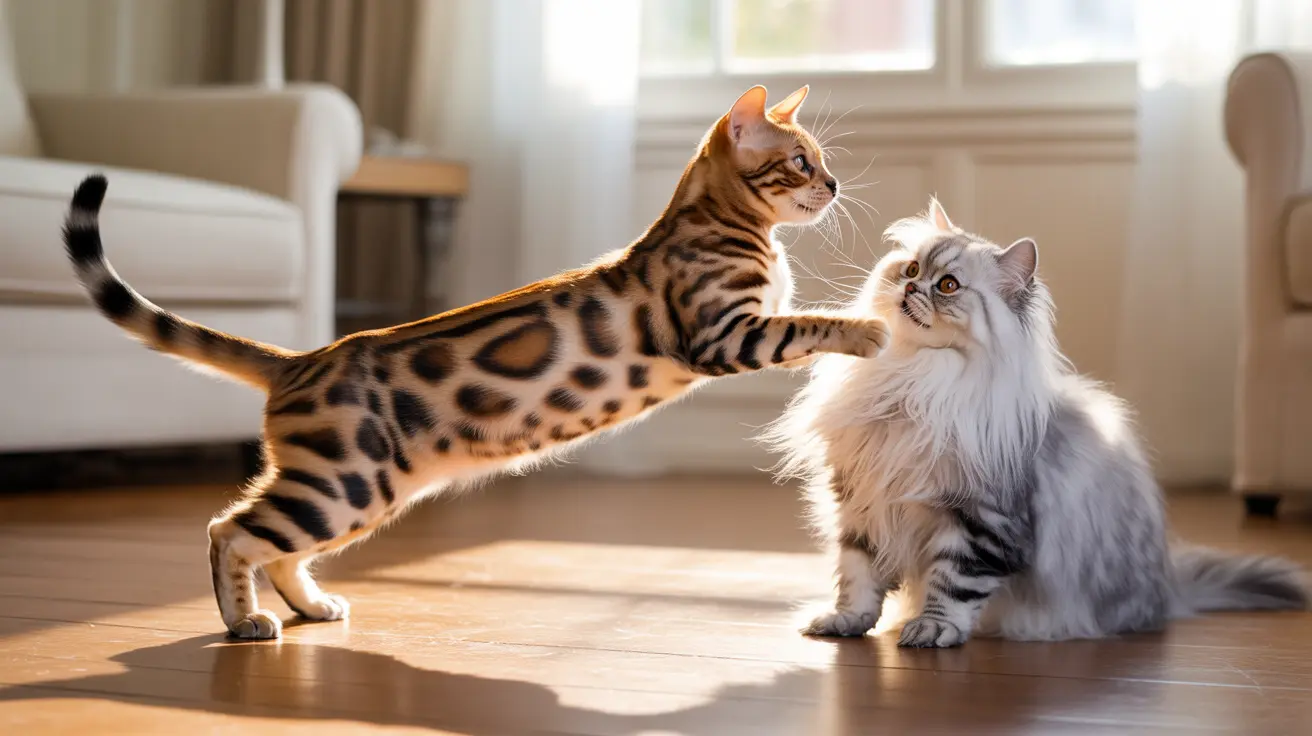The Science Behind Feline Sexual Behavior
Scientific research shows that while cats may engage in same-sex behaviors, these actions are typically driven by different motivations than human sexual orientation. Unlike humans, cats' sexual behaviors are primarily influenced by hormones, instinct, and environmental factors rather than long-term sexual preference.
Studies indicate that approximately 10% of animal species exhibit some form of same-sex behavior, though these interactions often serve different purposes than human romantic relationships.
Common Same-Sex Behaviors in Cats
Social Bonding vs. Sexual Behavior
Many behaviors that might appear sexual to human observers are actually forms of social bonding or dominance display in cats. These include:
- Mutual grooming
- Sleeping together
- Mounting behavior
- Play fighting
These actions typically serve social functions rather than indicating sexual preference or orientation.
Understanding Mounting Behavior
Same-sex mounting in cats is often misinterpreted as sexual behavior when it actually serves several different purposes:
- Establishing social hierarchy
- Play behavior
- Response to stress or excitement
- Practice for future mating (in younger cats)
- Dominance assertion
The Role of Hormones and Neutering
Intact male cats may engage in same-sex mounting when female cats aren't available. This behavior is typically driven by hormones rather than sexual preference. Neutering often reduces these behaviors significantly, supporting the theory that they're hormone-driven rather than orientation-based.
Social Structure and Cat Behavior
Cats are complex social creatures, and many of their interactions serve to maintain group harmony and establish social bonds. What humans might interpret as romantic or sexual behavior often has more to do with social dynamics than sexual attraction.
What Science Says About Sexual Orientation in Cats
Current scientific consensus indicates that while same-sex behaviors exist in cats, there's no evidence supporting the existence of fixed sexual orientations similar to human concepts of gay, straight, or bisexual. Cats' sexual behaviors are more fluid and situational than human sexuality.
Frequently Asked Questions
Can cats be gay or have same-sex sexual orientation like humans?
While cats may engage in same-sex behaviors, there's no scientific evidence supporting the existence of fixed sexual orientations in cats comparable to human concepts of being gay, straight, or bisexual. Their behaviors are primarily driven by instinct and hormones.
What causes same-sex mounting or grooming behaviors in cats?
Same-sex mounting and grooming can be caused by various factors, including social bonding, dominance assertion, play behavior, hormonal influences, or stress. These behaviors typically serve social functions rather than indicating sexual preference.
How can I tell if my cat's same-sex behavior is social bonding or sexual?
Most same-sex interactions between cats are social rather than sexual. Look for context: if the behavior includes mutual grooming, sleeping together, or occasional mounting without sexual characteristics, it's likely social bonding.
Does neutering affect a male cat's likelihood to show same-sex behaviors?
Yes, neutering typically reduces sexually-motivated behaviors in male cats, including same-sex mounting. However, social bonding behaviors may continue as they're not primarily sexual in nature.
Should I be concerned if my cats display same-sex mounting or affectionate behaviors?
No, these behaviors are generally normal and not cause for concern. They're typically part of natural cat social behavior. However, if the behavior becomes excessive or aggressive, consult your veterinarian to rule out any underlying issues.
Conclusion
While cats may exhibit same-sex behaviors, it's important to understand these actions through the lens of feline behavior rather than human concepts of sexual orientation. Most same-sex interactions in cats are related to social bonding, dominance, or hormonal influences rather than sexual orientation as we understand it in humans.






